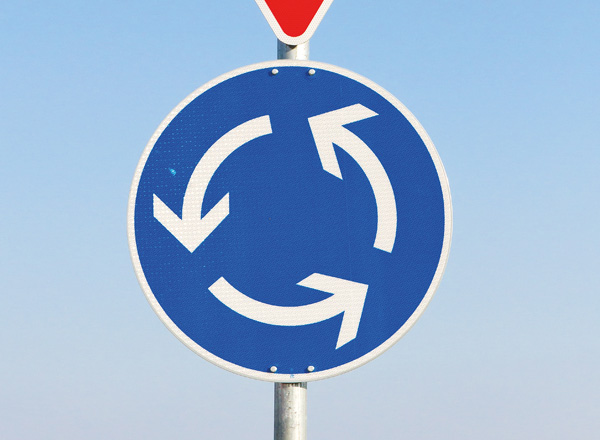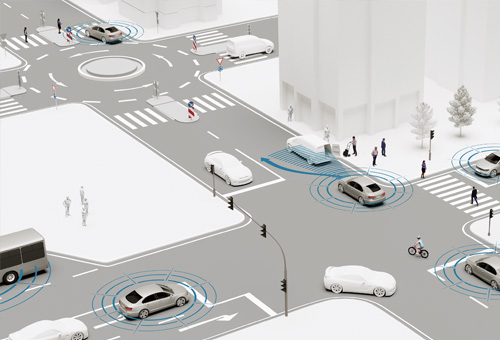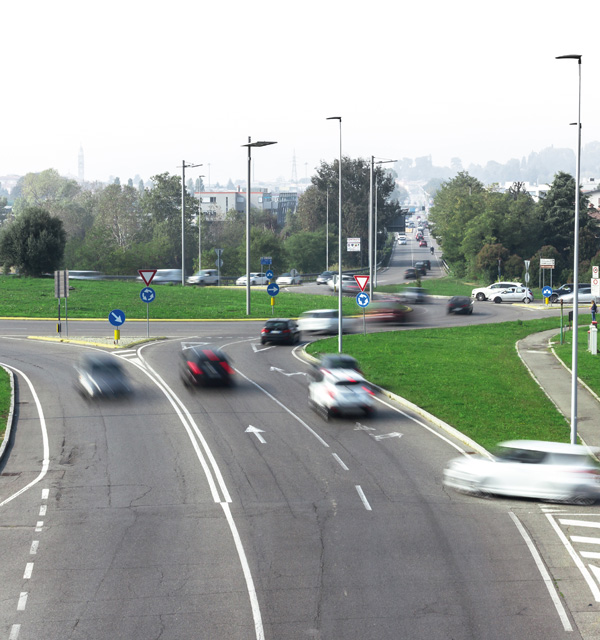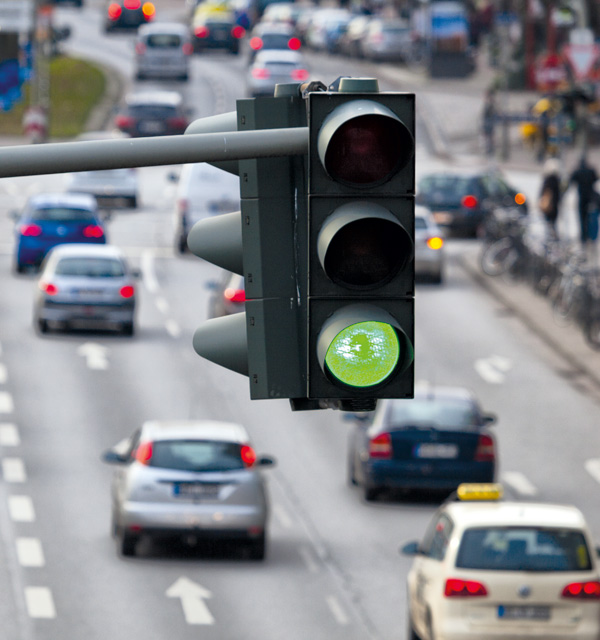Highly automated driving functions in an urban environment are presented with the challenge of having to safely and reliably master highly varied situations and scenarios. Junctions such as intersections and roundabouts, in particular, do not exhibit a uniform appearance, therefore requiring vehicle reactions that are extremely different depending on the traffic situation. Many different features of the static infrastructure of the junction and the current traffic situation must be factored in before the overall traffic situation can be registered. Both an intersection and a roundabout may also demand a cooperative strategy from automated driving, one which also factors irregular behaviour by other road users.
The ‘Automated driving through urban junctions’ subproject aims to implement safe, automated vehicle guidance through selected intersections and roundabouts. Development will proceed in three stages that will become successively more challenging:
Detecting and factoring in all relevant road users is also important for the ‘roundabout’ junction. Its development will also proceed over three stages. The first step involves factoring in the relevant road users when approaching the roundabout, with the next step involving driving into the roundabout and through it to reach the required exit point. The last step will factor in driving out of the roundabout.















